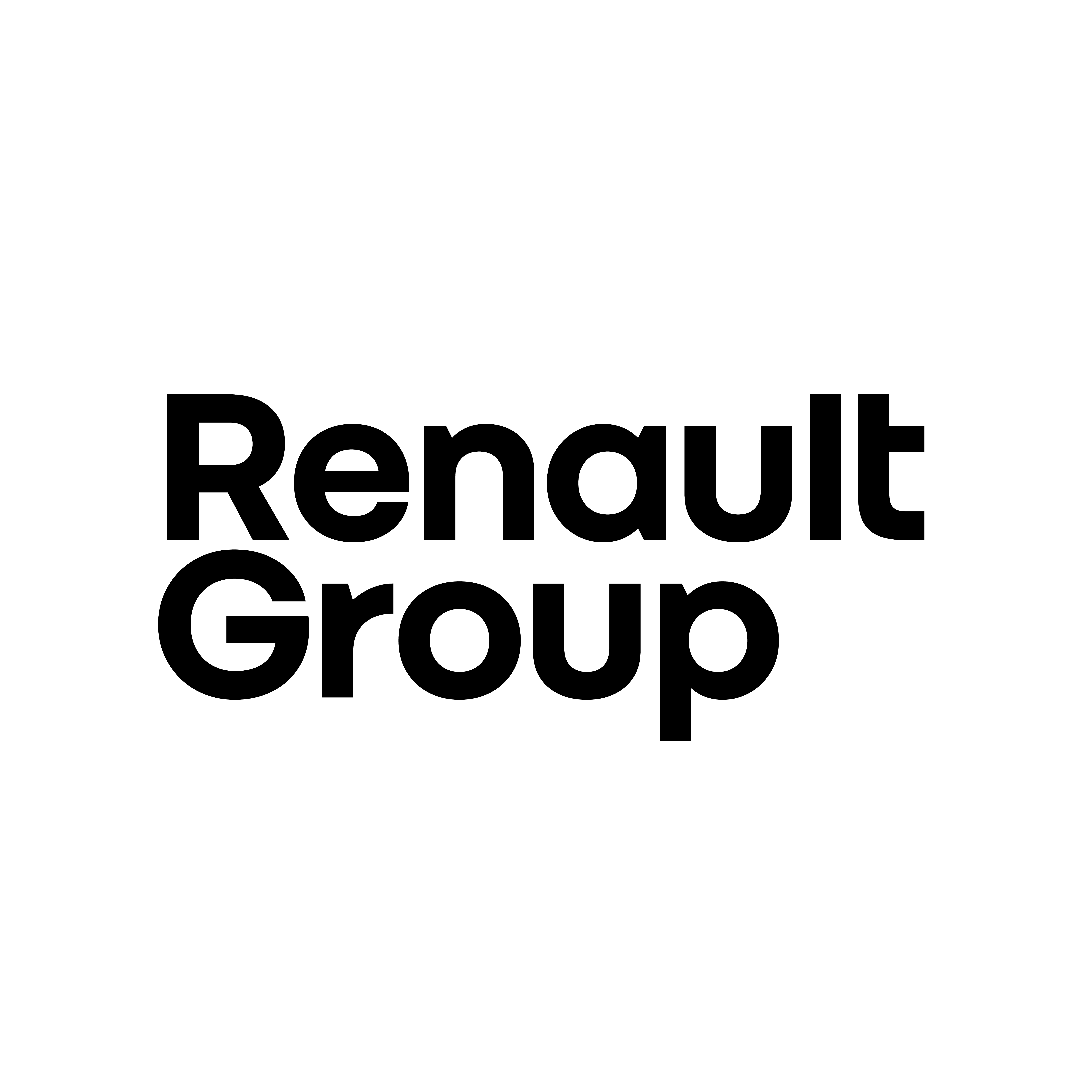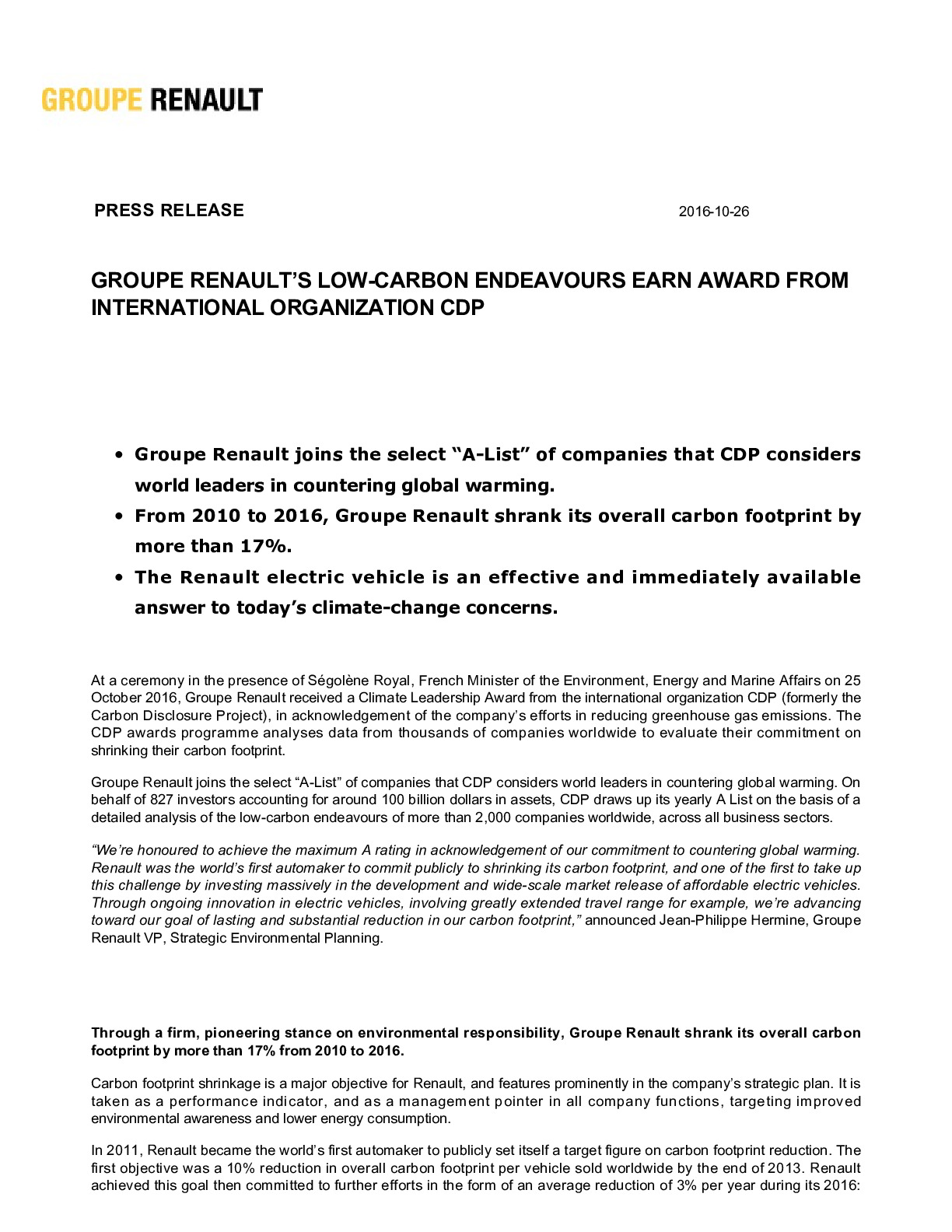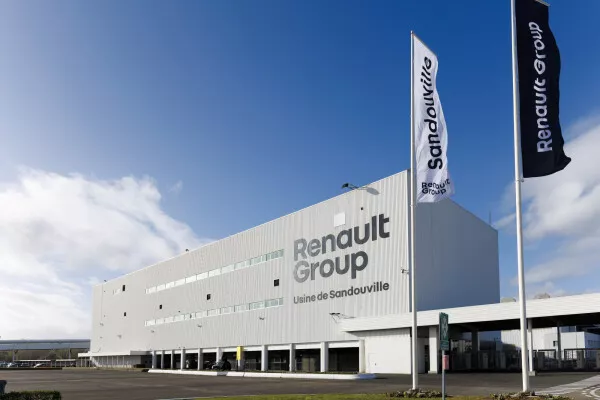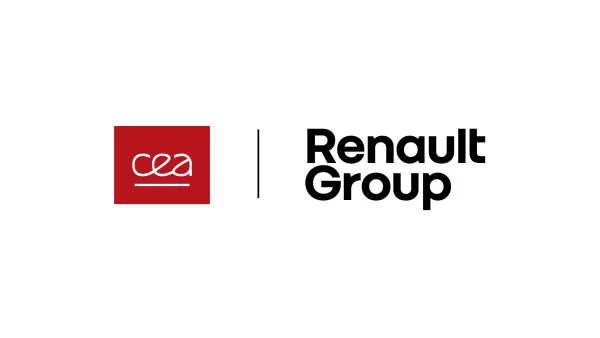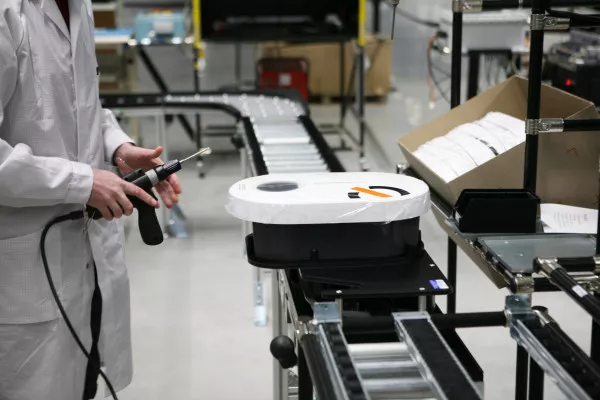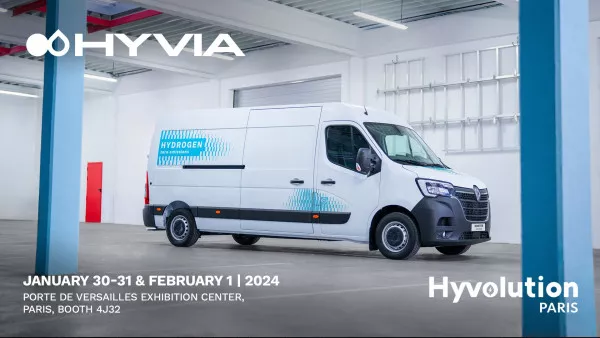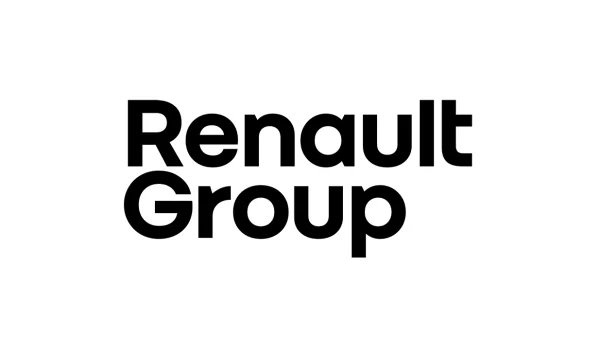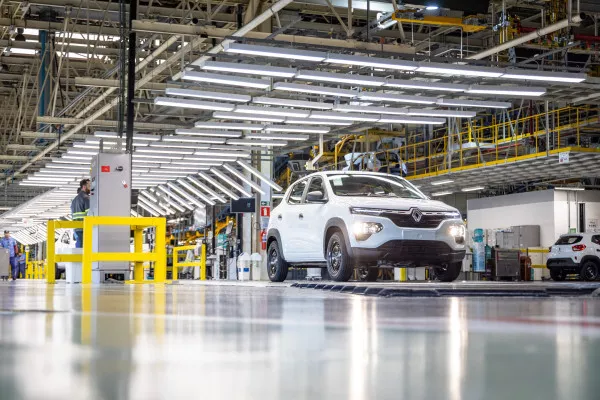Groupe Renault’s low-carbon endeavours earn award from international organization CDP
26 October 2016 10:00
At a ceremony in the presence of Ségolène Royal, French Minister of the Environment, Energy and Marine Affairs on 25 October 2016, Groupe Renault received a Climate Leadership Award from the international organization CDP (formerly the Carbon Disclosure Project), in acknowledgement of the company’s efforts in reducing greenhouse gas emissions. The CDP awards programme analyses data from thousands of companies worldwide to evaluate their commitment on shrinking their carbon footprint.
Groupe Renault joins the select “A-List” of companies that CDP considers world leaders in countering global warming. On behalf of 827 investors accounting for around 100 billion dollars in assets, CDP draws up its yearly A List on the basis of a detailed analysis of the low-carbon endeavours of more than 2,000 companies worldwide, across all business sectors.
“We’re honoured to achieve the maximum A rating in acknowledgement of our commitment to countering global warming. Renault was the world’s first automaker to commit publicly to shrinking its carbon footprint, and one of the first to take up this challenge by investing massively in the development and wide-scale market release of affordable electric vehicles. Through ongoing innovation in electric vehicles, involving greatly extended travel range for example, we’re advancing toward our goal of lasting and substantial reduction in our carbon footprint,” announced Jean-Philippe Hermine, Groupe Renault VP, Strategic Environmental Planning.
Through a firm, pioneering stance on environmental responsibility, Groupe Renault shrank its overall carbon footprint by more than 17% from 2010 to 2016.
Carbon footprint shrinkage is a major objective for Renault, and features prominently in the company’s strategic plan. It is taken as a performance indicator, and as a management pointer in all company functions, targeting improved environmental awareness and lower energy consumption.
In 2011, Renault became the world’s first automaker to publicly set itself a target figure on carbon footprint reduction. The first objective was a 10% reduction in overall carbon footprint per vehicle sold worldwide by the end of 2013. Renault achieved this goal then committed to further efforts in the form of an average reduction of 3% per year during its 2016: Drive the Change plan. The company was thus targeting an overall carbon reduction approaching 17% from 2010 to 2016.
By the end of 2015, Renault had already shrunk its carbon footprint 1 by 17.2% with respect to 2010, ahead of its 2016 deadline. For the year 2015 alone, the reduction in CO2 emissions achieved by Renault was equivalent to the yearly CO2 emissions from a city the size of Barcelona 2 .
Groupe Renault’s carbon footprint figure includes: emissions of greenhouse gases (CO2 in the main) generated during the vehicle lifecycle as such (production of energy for powering the vehicle, plus the provision of materials involved in vehicle manufacture); and emissions across all its business operations (design, manufacture, transport, sale of vehicles and parts, and all business support functions). To shrink its carbon footprint, Renault addresses all these aspects.
The electric vehicle is an effective and immediately available answer to today’s climate-change concerns: it emits no CO2 while driving 3 , and its overall carbon footprint, already smaller on average than that of an equivalent internal-combustion vehicle in Europe, will continue to shrink with the development of renewable energy sources for generating carbon-free electricity. Renault has pioneered the electric vehicle in Europe, and leads the European market for electric vehicles, with cars such as ZOE, Europe’s biggest-selling electric car, which now boasts a record travel range of 400 km 4 . Renault has put more than 100,000 electric vehicles on the road since 2011, and in doing so has avoided the discharge into the atmosphere of 125,000 tonnes of CO2.
Renault also works on carbon reduction across all its business operations: in manufacturing, engineering, transport, sales, etc. Renault is constantly improving the energy efficiency of its production facilities, by making increasing use of renewable energies. A good example is the carbon-neutral Tangiers facility in Morocco, the only one of its kind in the automotive industry, which uses a biomass boiler fuelled by local agricultural residues. In 2015, 91% of the plant’s energy needs were met from renewable energy sources, thus avoiding atmospheric discharge of more than 90,000 tonnes of CO2 per year.
Click here to read the CDP report.
1 Per vehicle sold worldwide.
2 CO2 emissions equivalent to those from a European city of population about 1,600,000 were avoided in 2015 with respect to 2010.
3 No CO2 or officially defined atmospheric pollutant emissions during driving, except from wear parts.
4 On official NEDC cycle.
Sur le même sujet

